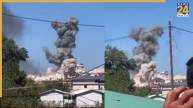Pakistan: Pakistan has once again experienced a year-on-year surge in short-term inflation, reaching 30.82 percent for the week ending on August 10, according to official data from the Pakistan Bureau of Statistics (PBS), as reported by ARY News.
The Sensitive Price Indicator (SPI) was used to measure the short-term inflation rate. However, on a week-on-week basis, short-term inflation saw a rise of 0.69 percent, raising concerns among economists and consumers alike due to its persistent increase.
Compared to the previous week, prices of 29 out of 51 items in the SPI basket increased, while prices of five goods decreased, and 17 remained unchanged, as reported by ARY News.
During the reviewed week, notable increases in prices from the same period a year ago were observed in wheat flour (131.81 percent), cigarettes (109.57 percent), gas charges for Q1 (108.38 percent), Lipton tea (95.19 percent), rice basmati broken (84.09 percent), chili powder (72.94 percent), rice Irri-6/9 (72.74 percent), sugar (67.90 percent), chicken (65.87 percent), gur (58.93 percent), men’s sponge chappal (58.05 percent), potatoes (57.02 percent), and tomatoes (53.66 percent).
Read more: Pakistan Senator Anwar-ul-Haq Kakar named caretaker Pak PM
Meanwhile, notable week-on-week increases were seen in the cost of chili powder (3.72 percent), powdered milk (3.65 percent), pulse mash (3.13 percent), garlic (2.39 percent), sugar (2.30 percent), chicken (2.27 percent), salt (1.84 percent), and eggs (1.74 percent).
The Ministry of Finance in Pakistan highlighted five significant ongoing economic challenges contributing to increased poverty and social vulnerabilities, with high fuel prices and exchange rate depreciation being primary factors. Additionally, the impact of the Russian-Ukraine war on the Pakistani economy has played a substantial role, particularly due to elevated fuel prices.
Edible oil, after fuel prices, has a considerable impact on GDP and household consumption, affecting the poor disproportionately. Rising poverty rates and record inflation, mainly food inflation, were also identified as pressing concerns, negatively impacting household consumption and potentially leading to greater poverty, especially in rural areas.













